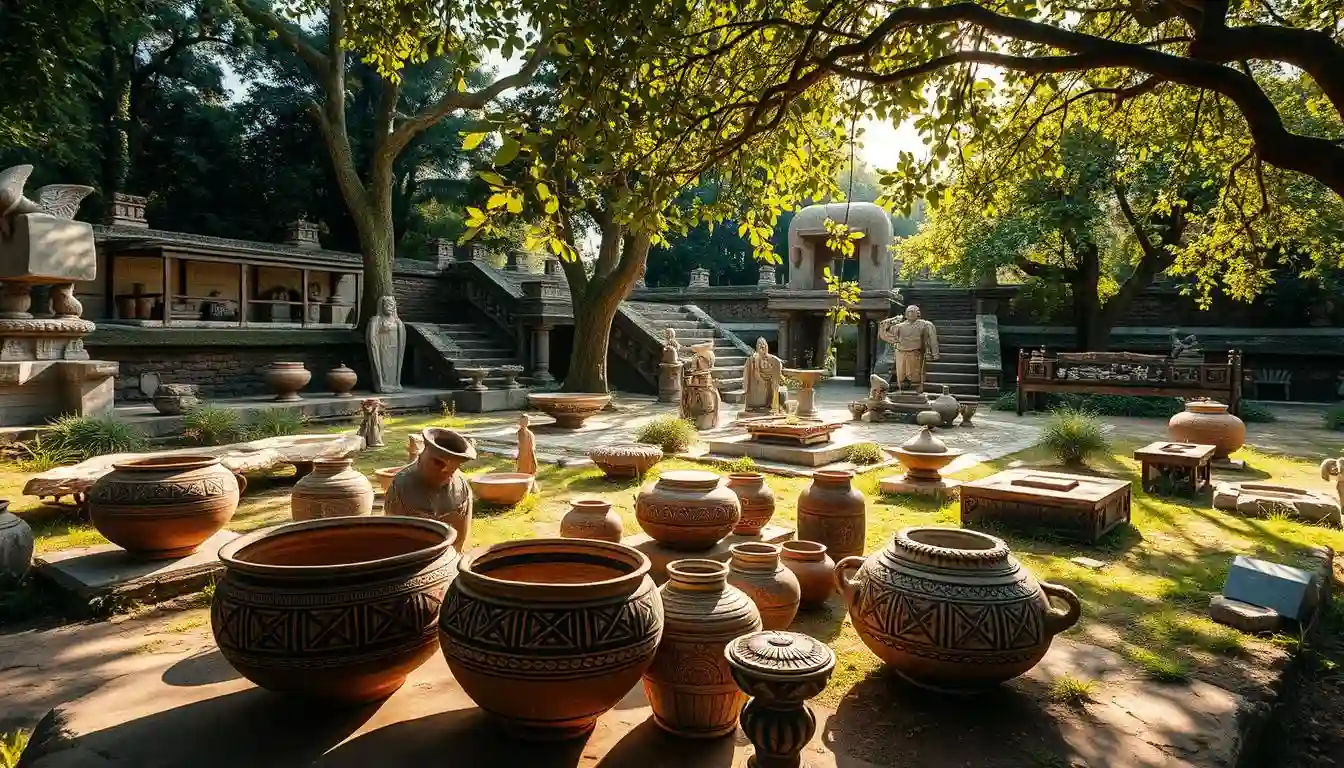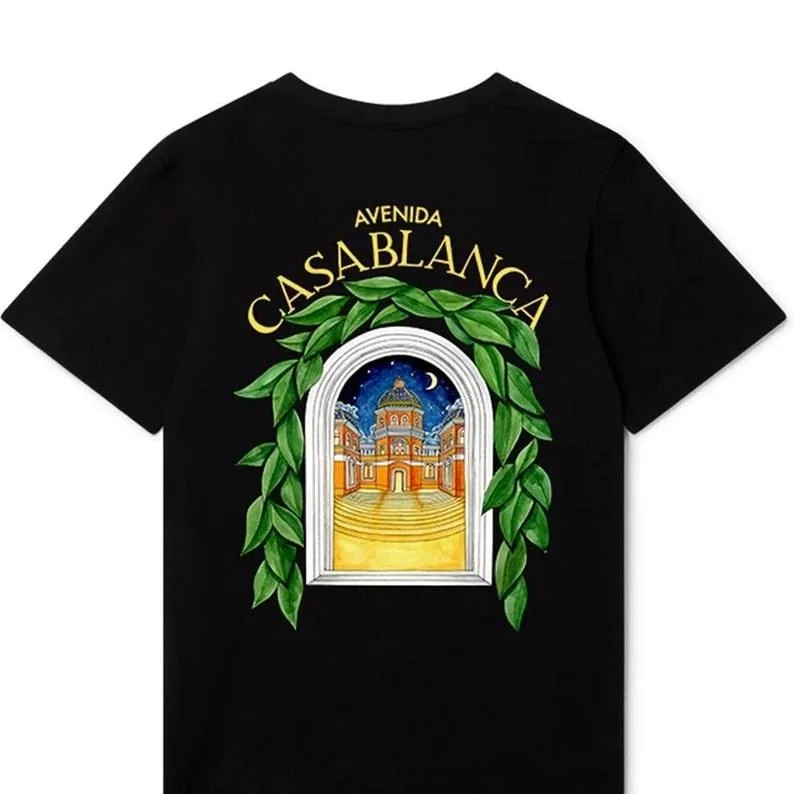Discovering the Depths of Ancient Arts
The Timeless Allure of Ancient Art serves as a powerful window into the lives, beliefs, and practices of early civilizations. From the intricate cave paintings of prehistoric humans to the majestic sculptures of ancient Rome, these artworks not only tell stories but also reveal the cultural identities of their creators. In this article, we will explore the various forms of ancient art, their significance, and the enduring impact they have on contemporary society.
Introduction
Art is one of the most profound expressions of human creativity, transcending time and cultural boundaries. Ancient art, in particular, offers a unique glimpse into the world of our ancestors, illuminating their beliefs, social structures, and daily lives. It invites us to consider not only what these works of art represent but also how they reflect the values and challenges of the civilizations that produced them.
As we delve into the realm of ancient art, we will journey through various cultures, from the prehistoric artists who first marked their existence on cave walls to the sophisticated societies of Egypt, Greece, and Rome. Each civilization contributed uniquely to the tapestry of human expression, leaving behind legacies that continue to influence artists and cultures around the world today.
The Beginnings of Art: Prehistoric Cave Paintings
Historical Context
Cave paintings, often considered the earliest forms of artistic expression, date back as far as 40,000 years ago. These artworks are predominantly found in regions such as Europe, particularly in France and Spain, but similar forms exist globally, indicating that the impulse to create art is a universal trait of humanity. The significance of these paintings extends beyond mere decoration; they represent an early form of communication and storytelling.
The timeline of prehistoric art can be categorized into various phases:
- Early Upper Paleolithic (circa 40,000–25,000 BCE): The earliest known cave art, characterized by animal representations and simple human figures.
- Middle Upper Paleolithic (circa 25,000–15,000 BCE): More complex and detailed imagery, including engravings and reliefs.
- Late Upper Paleolithic (circa 15,000–10,000 BCE): Diverse styles and techniques, with an emphasis on abstraction and symbolic representations.
Archaeological findings suggest that these paintings were created by hunter-gatherer societies, reflecting their environment and experiences. They depict various animals, such as bison, horses, and deer, which were essential to the survival of these communities. The locations of the paintings—often deep within caves—indicate that they may have held ritualistic or spiritual significance, possibly serving as a means of connecting with the spirit world or as part of hunting magic.
Techniques of Cave Artists
The techniques employed by prehistoric artists reveal a sophisticated understanding of materials and methods. Natural pigments were made from readily available resources such as ochre, charcoal, and minerals. These pigments were then applied using various techniques, including:
- Blowing: Artists would blow pigment through hollow reeds onto the cave walls, creating mist-like effects.
- Stenciling: Hands were used to create stencils, where artists would cover their hands with pigment and press them against the wall, leaving a negative impression.
- Brushes: Some evidence suggests the use of primitive brushes made from twigs or animal hair to apply paint more delicately.
The vividness of these images suggests that the cave artists possessed not only creativity but also a deep connection to their surroundings. The choice of colors and forms likely held specific meanings, tied to their understanding of the world and their place within it.
Theories on Purpose and Meaning
The purpose behind cave paintings remains a topic of scholarly debate. Various theories have emerged, each attempting to decipher the intentions of these early artists:
- Hunting Magic: One prevalent theory posits that these artworks served as part of hunting rituals. The idea is that depicting animals in a cave would somehow influence the success of future hunts, capturing the essence or spirit of the prey.
- Spiritual and Religious Significance: Another interpretation suggests that the paintings held spiritual meaning, possibly representing beliefs in animism or the veneration of nature. The act of creating art in secluded cave spaces may have been a means of connecting with the divine.
- Storytelling and Record-Keeping: Cave paintings may also represent some of the earliest forms of storytelling. By depicting scenes from their lives, prehistoric people could communicate experiences, traditions, and knowledge to future generations.
Specific examples of cave art further illustrate these theories. The famous Lascaux cave paintings, for instance, depict a variety of animals, including stags and bison, arranged in dynamic scenes that suggest movement and interaction. The depth of these images may reflect a complex understanding of animal behavior and a communal relationship with nature.
Cave art remains a profound testament to human creativity and the need for expression. It provides insight into the complexities of early human life, illustrating that the desire to create and communicate is as old as humanity itself.
The Art of Ancient Egypt: Symbolism and Eternity
Hieroglyphs: The Language of the Gods
As we transition from prehistoric art to the more structured expressions of ancient civilizations, we turn our attention to Ancient Egypt. Renowned for its rich symbolism and artistic achievement, Egyptian art was intricately linked to religion, governance, and the afterlife.
Hieroglyphs, the written characters of the ancient Egyptians, represent one of the most significant aspects of their art. These symbols were not merely letters; they were imbued with spiritual meaning and often depicted scenes of everyday life, mythology, and the divine.
The intricate system of hieroglyphs included phonetic signs and logograms, allowing for complex expression. For instance, the depiction of the ankh symbol (☥) represented life and immortality, reflecting the Egyptian belief in the afterlife. Hieroglyphs were meticulously carved into stone, painted on tomb walls, and inscribed on papyrus, highlighting the Egyptians’ commitment to preserving their culture and beliefs.
The Role of Scribes
Scribes played a crucial role in ancient Egyptian society, acting as the literate class responsible for recording history, religious texts, and administrative documents. Their ability to read and write hieroglyphs was highly respected, and many rose to prominent positions within the government. The careful arrangement of hieroglyphs was essential not only for communication but also for ensuring that the deceased’s journey to the afterlife was properly guided.
The emergence of the Rosetta Stone in 1799 was pivotal in understanding hieroglyphs. This artifact features a decree in three scripts: Greek, Demotic, and hieroglyphic. It allowed scholars like Jean-François Champollion to decipher hieroglyphs, unlocking the secrets of ancient Egyptian writing and culture.
Monumental Architecture: A Testament to Power
The architectural achievements of ancient Egypt are nothing short of awe-inspiring. Structures such as the pyramids and temples stand as testaments to the civilization’s engineering prowess and religious devotion.
The Great Pyramid of Giza
The Great Pyramid of Giza, built during the Fourth Dynasty around 2580–2560 BCE, remains one of the Seven Wonders of the Ancient World. This monumental structure was constructed as a tomb for Pharaoh Khufu (Cheops) and exemplifies the Egyptians’ advanced understanding of mathematics and engineering.
The pyramid originally stood at 146.6 meters (481 feet) tall and was constructed using approximately 2.3 million blocks of stone, each weighing between 2.5 to 15 tons. The precision with which these massive stones were cut and placed is remarkable, showcasing the Egyptians’ ability to work with large-scale construction projects.
Recent discoveries, including the use of a complex system of ramps and levers, have shed light on how these ancient builders achieved such feats. The alignment of the pyramid with the cardinal points reflects the Egyptians’ knowledge of astronomy and their belief in the afterlife, where the pharaoh would ascend to join the gods.
Temples and Rituals
Temples, such as Karnak and Luxor, were designed not only as places of worship but also as political and cultural centers. These structures were adorned with intricate reliefs and hieroglyphs that depicted scenes of divine interaction, royal achievements, and rituals. The layout of these temples often followed a specific axis aligned with celestial events, further emphasizing their religious significance.
The temple of Karnak, for instance, is a vast complex dedicated to the god Amun. It features a series of pylons, courtyards, and halls adorned with colossal statues and hieroglyphs narrating the accomplishments of pharaohs. The sheer scale and detail of these structures demonstrate the Egyptians’ devotion to their deities and the importance of ritual in their daily lives.
Sculpture and Painting
Egyptian sculpture and painting were highly stylized and adhered to strict conventions. Artists aimed for an idealized representation rather than a realistic one, reflecting the society’s values and beliefs. Statues of pharaohs and gods often depicted figures in a rigid, frontal pose, symbolizing power and stability.
In tombs, wall paintings depicted scenes of daily life, showcasing the belief in the afterlife. These images were meant to provide the deceased with the comforts of life beyond death, highlighting the importance of continuity and remembrance in Egyptian culture.
One of the most famous examples of tomb art is found in the tomb of Tutankhamun, which features vibrant frescoes depicting hunting scenes, feasting, and ritual offerings. These artworks not only served to honor the pharaoh but also to ensure his successful journey in the afterlife.
The Classical Period: Greece and Rome
Greek Sculpture: The Pursuit of Perfection
As we move into the classical period, Greek art emerged as a defining influence on Western civilization. Greek artists sought to represent the human form in its most idealized state, achieving a level of realism and beauty that set a standard for future generations.
Evolution of Sculpture
The evolution of Greek sculpture can be traced through distinct periods: the Archaic, Classical, and Hellenistic. The Archaic period (circa 800–500 BCE) is characterized by rigid poses and stylized features, as seen in the kouros and kore statues. These figures often depicted young men and women in a formal stance, representing youth and beauty.
In contrast, the Classical period (circa 500–323 BCE) marked a shift toward naturalism and dynamic poses. Artists like Phidias and Polykleitos emphasized proportion and anatomy, as exemplified by the iconic statue of Zeus at Olympia and the Doryphoros (Spear-Bearer). The Classical style prioritized balance and harmony, reflecting the Greek ideals of beauty and order.
The Hellenistic period (circa 323–31 BCE) further pushed the boundaries of expression, showcasing emotional depth and movement. Notable works, such as the Winged Victory of Samothrace and the Laocoön Group, reflect the dramatic and intricate style of this era, capturing intense emotion and physicality.
Key Artists and Their Masterpieces
- Phidias: Renowned for his colossal statue of Athena Parthenos, housed in the Parthenon, Phidias’ work epitomizes the artistic achievement of the Classical period. His attention to detail and understanding of proportion set new standards for sculpture. The statue’s elaborate drapery and dynamic posture exemplified the idealized beauty that characterized Greek art.
- Praxiteles: Known for his sensual and graceful figures, Praxiteles created the famous statue of Hermes and the Infant Dionysus, showcasing a departure from the rigid forms of earlier periods. His works emphasized the softness of the human body, highlighting the beauty of movement and the interplay of light and shadow.
Roman Architecture: Engineering Marvels
Roman art and architecture drew heavily from Greek influences but also showcased innovations in engineering and design. The Romans excelled in creating structures that combined function with grandeur.
Notable Structures
- The Colosseum: Completed in 80 CE, the Colosseum exemplifies Roman architectural ingenuity. This amphitheater could hold up to 80,000 spectators and was used for various public spectacles, including gladiatorial contests. The use of arches and concrete allowed for its immense scale and durability. The intricate system of corridors and passages reflected the Romans’ advanced understanding of crowd management and architecture.
- Aqueducts: Roman aqueducts are a testament to their engineering prowess, transporting water from distant sources to cities. The Aqua Appia, built in 312 BCE, was one of the first aqueducts, showcasing the Romans’ commitment to public health and infrastructure. The design of these aqueducts involved a series of arches and tunnels, demonstrating their mastery of construction techniques.
Roman Sculpture and Mosaics
Roman sculpture often drew from Greek influences but added a distinct realism. Portraits of emperors and notable figures were highly detailed, capturing individual features and expressions. This emphasis on realism served both political and social purposes, allowing rulers to project authority and connect with their subjects.
Mosaics were another significant form of Roman art, often found in public spaces and private villas. These intricate artworks utilized small colored stones or glass pieces to create elaborate scenes depicting mythology, daily life, and nature. The Villa of the Mysteries in Pompeii features stunning mosaics that reveal the Romans’ appreciation for detail and storytelling through art.
Pottery and Daily Life
Greek pottery is another vital aspect of ancient art, known for its intricate designs and storytelling. Vases were often decorated with scenes from mythology and daily life, providing insight into the values and beliefs of Greek society.
The Black-Figure and Red-Figure Techniques
Two primary techniques dominated Greek pottery: the black-figure and red-figure styles. The black-figure technique involved painting figures in a black slip, which was then fired to create a glossy finish. In contrast, the red-figure technique, developed later, allowed for more detail and a greater range of expression, as artists could draw directly on the red clay background.
The scenes depicted on pottery often served educational purposes, illustrating stories of gods, heroes, and everyday activities. They provide valuable insights into ancient Greek culture, social norms, and religious practices.
One famous example is the amphora attributed to the painter Exekias, which depicts Achilles and Ajax playing a game. This artwork not only showcases the skill of the artist but also reflects the cultural importance of competition and camaraderie among warriors in Greek society.
The Influence of Ancient Art on Modern Society
Revival Movements
The legacy of ancient art is evident in numerous artistic movements throughout history, particularly during the Renaissance. This period marked a renewed interest in classical ideals, leading to a flourishing of art that echoed ancient Greek and Roman techniques.
The Renaissance: A Return to Classical Ideals
During the Renaissance (14th to 17th centuries), artists such as Leonardo da Vinci, Michelangelo, and Raphael sought to revive the principles of proportion, perspective, and humanism found in ancient art. Michelangelo’s David, inspired by classical sculptures, exemplifies the perfect human form, showcasing both strength and grace.
The revival of classical architecture was also prominent, with structures like St. Peter’s Basilica in Vatican City embodying the grandeur of ancient Roman design. The use of domes, columns, and arches reflected a deep appreciation for the achievements of earlier civilizations.
Cultural Exchanges
The exchange of artistic ideas between cultures has played a crucial role in the evolution of art. Ancient art did not exist in isolation; rather, it influenced and was influenced by neighboring civilizations.
Influence on Islamic Art
Following the rise of Islam, the influence of ancient art transformed as Islamic artists adapted and integrated classical elements into their works. The intricate tile work, geometric patterns, and calligraphy that characterize Islamic art bear witness to this synthesis.
Islamic artists were deeply influenced by the art and architecture of ancient Greece and Rome, incorporating elements of symmetry and balance while adhering to religious guidelines against depicting human figures. This blending of cultures enriched the artistic landscape of the time, resulting in magnificent structures like the Alhambra in Spain, which showcases the beauty of Islamic architecture.
Contemporary Perspectives on Ancient Art
Modern Artists Inspired by Ancient Art
Today, many contemporary artists draw inspiration from ancient art, using its themes and techniques to explore modern issues. This connection serves as a bridge between past and present, allowing for dialogue and reinterpretation.
Profiles of Contemporary Artists
- Mark Bradford: This American artist incorporates ancient techniques such as collage and layering into his works, exploring themes of identity, community, and history. His pieces often reflect a deep engagement with the past, using materials that evoke memories and stories. Bradford’s works remind us of the historical narratives that shape our current realities.
- Kara Walker: Walker’s silhouettes engage with historical narratives, addressing themes of race, gender, and power dynamics. Her work often references the visual language of ancient art, inviting viewers to reconsider history’s complexities. By using forms reminiscent of early silhouettes, Walker challenges viewers to confront the legacies of oppression and identity.
Cultural Appropriation vs. Appreciation
As contemporary artists draw upon ancient motifs, discussions surrounding cultural appropriation and appreciation have emerged. It is crucial to navigate these conversations thoughtfully, recognizing the historical context and significance of the works being referenced.
Ethical Considerations
Artistic borrowing can be a form of homage, but it can also lead to the commodification of cultural symbols. Artists and scholars advocate for respectful engagement with ancient art, emphasizing the importance of understanding its origins and meanings. Engaging with indigenous communities and descendants of ancient cultures can foster dialogue and collaboration, ensuring that the narratives surrounding these artworks remain authentic.
This ongoing dialogue is vital in the global art community, where the influence of ancient art continues to shape contemporary practices. By recognizing the cultural significance of these ancient works, modern artists can engage with them in a way that honors their legacy rather than dilutes it.
Conclusion: The Enduring Power of Ancient Art
Ancient art transcends time and geography, offering insights into the human experience across millennia. Its ability to convey complex ideas, emotions, and narratives continues to resonate with us today. As we delve into the mysteries of early civilizations, we uncover not just their artistic achievements but also the shared humanity that connects us all.
The exploration of ancient art reminds us of the importance of preserving and honoring our cultural heritage. By appreciating the creativity and ingenuity of our ancestors, we can foster a deeper understanding of ourselves and the world around us. The allure of ancient art lies not only in its beauty but also in its power to inspire, provoke, and unite us across generations.for more details please visit the website networksights.com















Leave a Reply